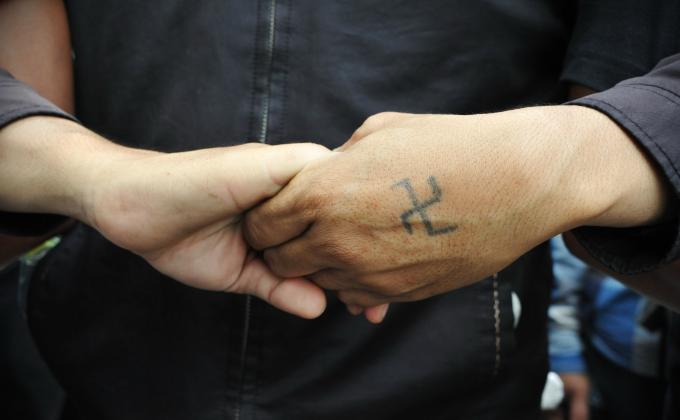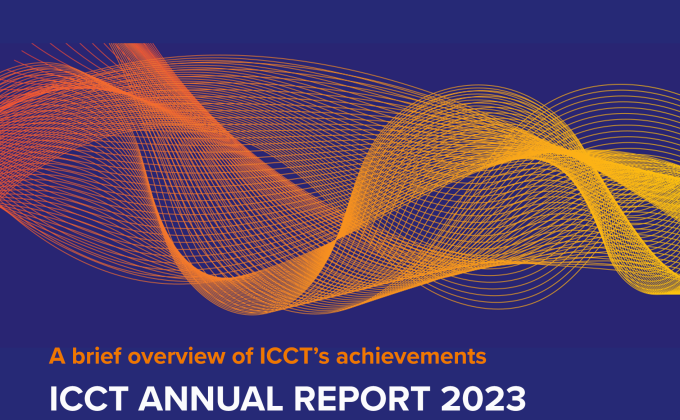Political violence associated with the far-right and ethnically and racially motivated extremism is widely seen as a growing threat across the globe. Right-wing extremists have, in recent years, carried out acts of mass murder, political assassination and, most recently, even mounted an armed insurrection against the US Capitol in Washington DC. Many other plots have been foiled, including an attempted kidnapping of the Governor of Michigan. In the UK, right-wing extremism is seen as the fastest growing terrorist threat, often involving teenagers. In several countries, including Germany, the UK and the US, there are growing concerns over members of the armed forces adopting rightwing extremist views.
In response to this growing threat, policymakers, practitioners and pundits have mobilised to stem the rise through a variety of initiatives. In doing so, however, they face challenges that, while common to other efforts to counter violent extremism (CVE), are especially pronounced when confronting right-wing extremism (RWE).
The crux of the problem in fighting RWE lies in its heterogeneity. As I discussed on last month’s ICCT-RESOLVE Forum titled ‘Back To The Future: The Historical Roots of Far-Right Violence, while it has been long recognised that CVE measures cannot rest on ‘one-size-fits-all’ principles, the divergence of RWE adds to this complexity. Definitions vary and the labels used to describe the phenomenon are invariably umbrella terms: abstract labels incorporating a range of different—and often conflicting—motivations and agendas. Usually included within these categories, for instance, are those propelled by their vehement anti-Semitism in addition to anti-Islamic extremists who can even be sympathetic towards Israel, and various hybrids between them. Positions on creed, geopolitics, information outlets and spheres of influence vary considerably. Even labels such as ‘white supremacist’ are not universally applicable when we consider the different notions of causality and hierarchies of threat assumed by elements of RWE that elevate spirituality above race, or present Western hegemony, capitalism and materialism as the most corrupting influences affecting their people.
Within RWE we find no common enemy, community or a shared vision of the past and future. These varying forms of extremism, therefore, do not, by definition, constitute a single social movement or ideology but several and often overlapping clusters of these social constructs that pose a risk in different ways depending on where you look.
Ways forward
How do we address these conceptual challenges? Two principles need to guide our approach. Firstly, we need to situate RWE in its wider context that recognises the plurality of actors, outlooks and outcomes associated with far-right radicalism and activist thought. Secondly, we need to base our understanding of these specific manifestations of RWE on the empirical realities on the ground and tailor our responses accordingly.
In terms of the former, and as already alluded to, different ideological outlooks are associated with the far-right, ranging from identitarianism, which is based primarily on cultural norms, to racial nationalism and supremacism and to more spiritual domains such as Traditionalism. These, in turn, are interpreted and enacted by different actors and agencies, from single individuals to social movements, that shape different outcomes. Violent extremism is part of other repertoires of contention that include softer measures such as public provocation and outreach campaigns, that in the long run, however, can be very harmful to public safety and social cohesion in their own right.
In terms of the latter, individual approaches to RWE need to recognise local conditions and contexts as its manifestations can differ considerably from country to country and evolve over time. In Western Europe, for instance, fatal attacks attributed to RWE have shifted in recent years from being perpetrated largely by groups or clusters to being carried out by lone actor terrorists, while in the US, far-right paramilitaries and militias have mobilised to violence for generations, in addition to lone actors and pursuers of a ‘leaderless resistance.’
Some of these lone individuals appear to have been highly ideologically motivated, composing manifestos setting out their justifications for violence, for instance, while others have had very limited and superficial engagement with political ideologies, driven instead by a multitude of other factors and events.
Meanwhile, groups and networks have proliferated, aided by online platforms, that promote extremism and violence and other forms of protest, while often eschewing direct involvement in violence themselves. The ‘extremist’ element of RWE, therefore, requires particular scrutiny. Individual terrorists, as noted, may not be especially ideological and ideologically extreme organisations may themselves not be particularly violent as they focus on other repertoires of contention.
A central part of their output, for instance, can best be described as ‘educational’: seeking to inform followers and potential followers of the reality as they see it. Extremist organisations and networks assemble online libraries and even convene comprehensive exams to test the ideological prowess and commitment of potential recruits.
Old ideas, new audiences
These attempts to ‘intellectualise’ RWE, however, point to another significant temporal shift as regards these movements. Most of the ideas being promoted are not new. Many were popularised by neo-Nazis in the 1970s and 80s, but even these stretch further back, while other currents of the radical right in Europe reach back beyond the Second World War. Even the more recent ideological incarnations, such as the identitarian movement, trace their origins back to ideological and political shifts in the 1960s, emboldened by anti-Islamic and -immigrant rhetoric in the late 1990s.
But these old ideas are reaching new audiences. These include university students, who have, in some cases, been instrumental in the establishment of new extremist networks. Arguably, therefore, a rise in RWE has less to do with the formulation of new ideas and more to do with the way they resonate with a new generation of advocates. We need to ask why this is the case.
Explanations for this new resonance will, as the two principles set out above would suggest, be multifaceted and context specific. These will combine opportunities afforded by new environments, including online environments, with an alignment between the values, beliefs and goals of individuals—whether formed by events or perceived conspiracies—and the movements and organisations that address these needs and concerns.
Measures to combat RWE will need to reflect this diversity, mobilising not only law enforcement and counter-terrorism tools but other stakeholders too, such as educators, civil society, and the tech industry who will all need to be alert to the evolving nature of right-wing extremism and formulate responses to it.
Image: "9-12 March in DC-19" by Andrew Aliferis is licensed under CC BY-ND 2.0








